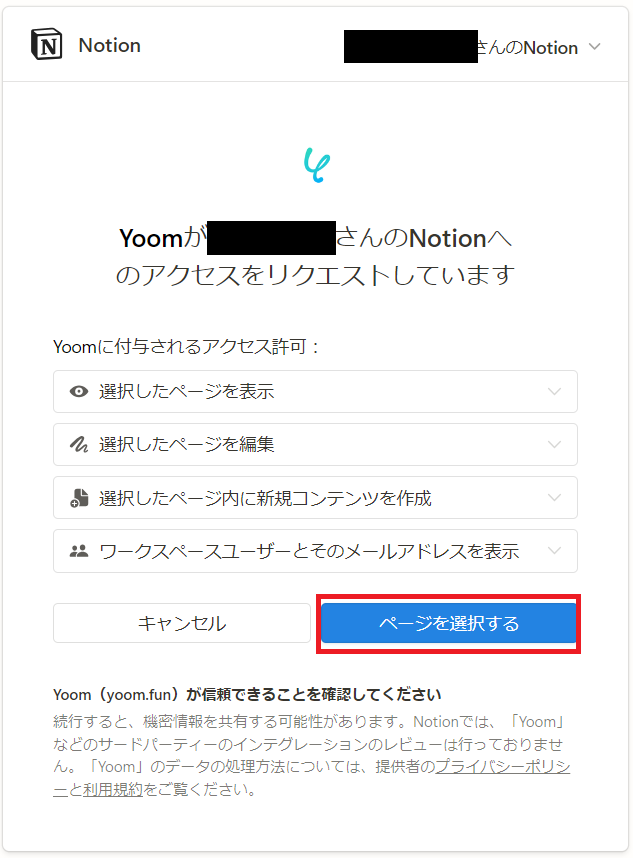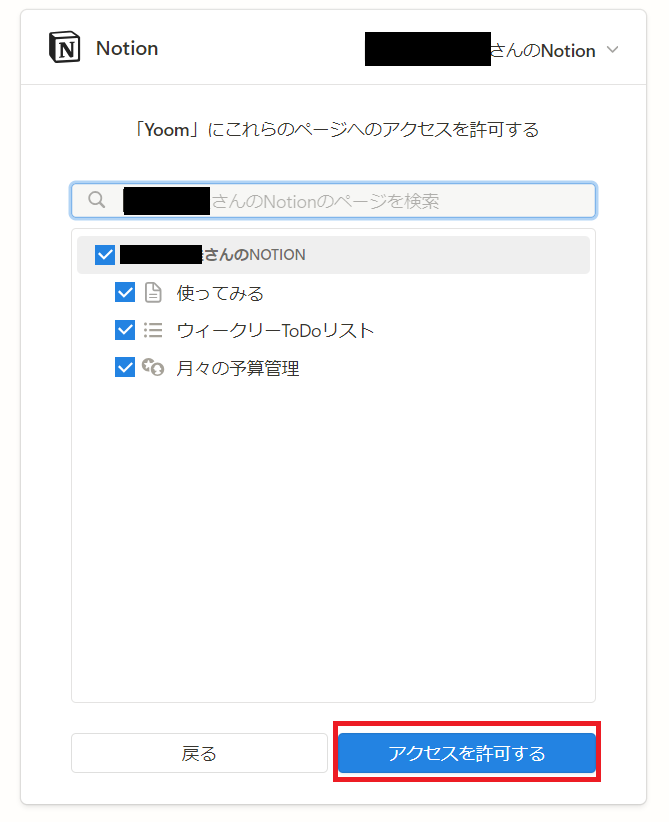The general flow until the completion of the process is as follows.
1: Connect Notion and OneDrive to My Apps
2: Set up a trigger in Notion
3: Configure OneDrive
4: Turn on the trigger
Now, let's establish a new connection between the two apps you want to integrate.
Step 1: Connect Notion and OneDrive to My Apps
(1) First, connect Notion to My Apps.
After logging into your Yoom account, click "My Apps" on the left panel and search for Notion from "New Connection".

(2) Click on the Notion app icon that appears.
On the next screen, click [Select a Page].

Select the page you want to link with your Yoom account and click [Allow Access] to complete the connection.

(5) Next, connect the OneDrive app.
Select OneDrive in the same way as registering Notion to My Apps.
Sign in when you transition to the following screen.
・Microsoft365 (formerly Office365) has both a home plan and a general business plan (Microsoft365 Business), and if you are not subscribed to the general business plan, authentication may fail.

If the setup is successful, you will be redirected to the My Apps screen of your Yoom account.
Now, both apps are connected to your Yoom account.
After confirming that the new connection of the target app to your Yoom account is complete, click the icon for "Try this template" in the template below.














.avif)


















.avif)

.png)






